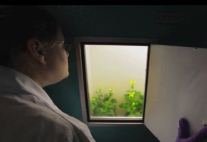The IEA has started a new regional technology study that helps determine the best way to make the Nordic region carbon-neutral by 2050. According to the research, around 3,000 offshore wind turbines will need to be in use in the region in order for success.
EPA won a decision at the D.C. Circuit in June 2012 allowing it to use its authority under the Clean Air Act to address climate change. With EPA Administrator Lisa Jackson leaving, how quickly will it act?
- By Christopher Ahlers, John David Baumgarten, Jared E. Schroder
According to a new study, there are now five times as many record-breaking hot months worldwide than could be expected without long-term global warming.
AccuWeather has reported that the droughts and heat experienced during 2012 caused crops to wither and the levels of the Mississippi River to dwindle, while experiencing the warmest year on record for the U.S.
Researchers from the University of Illinois conducted a study of ratsnakes in Ontario, Illinois, and Texas, with resulting showing that the species can adapt to higher temperature by becoming more active at night.
The Philippines will be introducing electronic tricycle taxis to replace its petrol-fuelled models, which could cut carbon dioxide emissions by a quarter of million tons.

The business case for it is stronger than ever, said Dow's vice president of sustainability and EH&S, Neil C. Hawkins.
She announced she will leave the administration soon after President Obama's State of the Union speech.
Researchers from the Radboud University Nijmegen have discovered that new bacteria found in the soil beneath a peatland reserve in the Netherlands actually consume methane.
The EPA has updated its national air quality standards in regards to harmful fine particle pollution, which now includes regulations on soot pollution.
The new PowerTreat product series address material handling needs at coal power plant and increases safety by lowering the risk of spontaneous combustion.
Researchers have begun working on a new computer model that will allow communities and aquaculture industries to better assess the human and environmental impacts on estuarine and marine ecosystems in Tasmania.
Lloyd's and other insurers have written a custom policy covering a team's bid to traverse Antarctica in winter for the first time and raise millions of a dollars for a charity trying to prevent blindness.
The quarterly HFES journal is seeking submissions on the topic by April 8, 2013.
“The Arctic is an extremely sensitive part of the world and with the warming scientists have observed, we see the results with less snow and sea ice, greater ice sheet melt, and changing vegetation," NOAA's administrator said.
The World Bank's new Adaptation to a Changing Climate in the Arab Countries report says extreme weather events are the "new norm" for the region.
The ice sheet in West Antarctica is melting faster than expected, causing oceanographers to find ways to improve predictions of future changes in ice sheet mass.
According to researchers, coastal fog in California contains elevated mercury levels, which may be the result of upwelling deep ocean water along the coasts. Upwelling processes bring mercury to the surface of the water, where it enters the atmosphere and is absorbed by fog.
Recent observations from satellites have shown that the smoke from Arctic wildfires is drifting over the Greenland ice sheet, settling on the ice as soot and making it more likely to melt under the sun.
With a new method for estimating greenhouse gases, researchers have found that the levels of nitrous oxide, a potent greenhouse gas, are much higher than previous predictions.